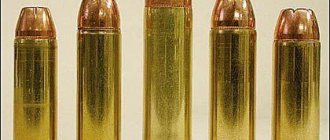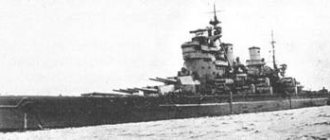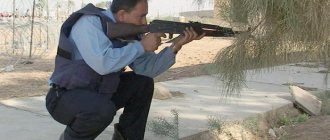What unites people all over the globe, besides having two ears? A passionate desire to chop, cut, stab, shred, hit each other for objective (and not so much) political, economic, ideological reasons. For centuries, people in all corners of the planet have been doing just this, trying to create the most advanced tools possible to reduce the population of their enemies. Today we will talk about what was used in medieval Japan to achieve this goal.
Tsurugi
It roughly looks like this. |Photo: rock-cafe.info.
A Japanese sword, which with a high degree of probability was borrowed and modified by the islanders from the Chinese. The sword was widely used in Japan until the advent of a fundamentally new blade weapon - tachi. The greatest spread of tsuruga occurred in the period from the 7th to the 9th centuries.
Sorry
Absolutely all Japanese swords have a characteristic curve called sori. It can be made in various versions. The centuries-old evolution of this type of bladed weapon, and at the same time the samurai equipment, made it possible to find an almost ideal option.
The sword is an extension of the arm, and a fencer’s arm is almost always slightly bent, so the weapon also has a bend. Everything is simple, but at the same time wise. Sori appears in part due to special processing that uses extreme temperatures. Hardening is not uniform, but zonal; some parts of the sword are exposed to much greater impact. By the way, in Europe craftsmen used exactly this method. After all the procedures, the Japanese sword has different hardness, the blade is 60 Rockwell units, and the back is only 40 units. So what is the name of the Japanese sword?
Tati
The next step in development. |Photo: turkcewiki.org.
In the 10th century, a fundamentally new bladed weapon appeared in Japan. Contrary to popular opinion (and the term used in everyday life and popular culture), the tati, like all derived types of bladed weapons, is not a sword, but a saber. The tachi was one of the largest swords in feudal Japan and was also more curved than the katana.
Note : Japanese bladed weapons have much more in common with Eastern and European sabers than with “traditional” swords. First of all, a katana is not a sword due to the fact that it has a cutting edge on only one side of the blade (unlike a tsurugi, which is really a sword).
Advantages and disadvantages
There are many myths and legends associated with the samurai sword. The katana is credited with almost fantastic properties—cutting stones and centuries-old trees with one blow. In fact, this is an ordinary high-quality edged weapon. It has a number of advantages:
- lightness combined with strength and flexibility;
- comfortable curved shape;
- Can be used as a one- or two-handed weapon;
- good pair work - long plus short samurai sword;
- optimal characteristics for delivering fast cutting blows.
Such weapons also have disadvantages:
- complexity and duration of production;
- vulnerability to impacts from hard objects;
- formation of chips and cracks as a result of errors during use.
It should be understood that any weapon can exhibit many shortcomings in inept hands. And, conversely, mastery of the weapon makes it perfect. Samurai learned the art of wielding a katana from childhood, which is why the Japanese sword is credited with such magical abilities.
Lightness meets strength
Convenient form
Optimal combat characteristics
Nice pair work - long plus short samurai swords
Katana
Symbol of samurai. |Photo: sketchfab.com.
Business card of the Japanese samurai. A long two-handed saber (up to 75.7 cm), which appeared as a result of the evolution of tachi. The first katanas appeared quite late - in the 15th century and were used until the end of the 19th century. Traditionally used in a “daisho” (large-small) combination: the katana was worn with its sheath, blade up, paired with a short wakizashi blade.
This is interesting : modern GOST standards for edged weapons define a katana as a “long two-handed saber.”
History of appearance
The art of forging and processing multilayer steel appeared in Japan later than in neighboring countries, so until the 7th century, weapons were imported from China or Korea. When Japanese blacksmiths managed to master the manufacturing technique, the first Japanese swords appeared - double-edged and straight.
IX-XII centuries brought numerous internecine clashes. Samurai became an outstanding class; the sword for them acquired the status of not only a weapon, but also a symbol. The technology for manufacturing edged weapons was honed. It acquired a curved shape due to the need to conduct horse battles.
The Kamakura era, lasting from the 12th to the 14th centuries, was the heyday of the art of Japanese sword making. The samurai acquired armor, which brought new requirements for weapons. The swords acquired greater striking power, and their shape changed slightly. Now they were used mainly for foot battles, so they needed to be held with both hands. It was a time of experimentation; many blacksmiths came up with unique manufacturing technologies that have not survived to this day.
From the 14th to the 16th centuries (Muromachi period), numerous wars were fought, requiring different weapons. Therefore, new types of samurai swords appeared. But the deplorable financial situation in which many clans found themselves did not allow them to pay big money for this. Therefore, the quality of bladed weapons has dropped significantly.
In the 16th century (Momoyama era), short swords appeared. Samurai began to carry a pair of daisho (large-small) weapons. These are katana and wakizashi. Due to its size, the first was more often used outdoors or in large rooms, the second - in cramped spaces. However, the need for weapons has generally decreased as civil strife has subsided. Now wearing swords has become just a sign of status, part of the traditional costume. Therefore, weapons began to be decorated in various ways, which often affected their fighting qualities. This period was also called the Age of New Swords.
And from the second half of the 19th century, the Age of modern swords began. The weapons of this period were called gendai. Carrying swords became prohibited, which led to a decline in production. At the beginning of the 20th century, measures began to revive the country's cultural heritage, an integral part of which is the Japanese sword. And today it is a symbol, the making of which is a real art.
Wakizashi
Additional weapons. |Photo: nihonto.rf.
Bladed weapons are very similar in shape to a katana, but have a shorter blade - up to 60 cm (most often less). In most cases, a pair of katana-wakizashi swords were made by the same master. Carrying weapons from different blacksmiths in pairs was considered “bad form” in samurai society. Wakizashi were used for the most part as a spare or auxiliary weapon.
Japanese spears. History, design features and application.
The most ancient bladed weapon in Japan was a spear, consisting of a blade and a shaft. The first mentions of this weapon date back to the 8th century, and spears gained the greatest popularity during the period of internecine wars. The classic Japanese spear was called the yari.
The spear is a traditional light infantry weapon used by warriors to throw riders off their horses, leaving them virtually defenseless.
Samurai also used spears in battle, and the art of using them was part of the mandatory training of these famous warriors. Spears were used to inflict piercing, slashing and cutting blows. The Japanese endowed spears with magical powers and believed that with their help they could ward off evil spirits.
There are a huge number of varieties of this weapon, which differ from each other in length, type of tip and method of attaching the blade to the shaft. However, there are also common features:
- The multifaceted tip was attached to the center of the shaft. For greater strength, special washers and a brass coupling were used.
- The round shaft was made of wood and wrapped with a cord at the top. This helped prevent the spear from slipping in the hand. At the end of the shaft there was a metal tip, which served for balance.
- Characteristically, there are lanyards painted in bright colors. They absorbed blood and prevented the weapon from slipping in the warrior’s hand.
- Spears were worn in sheaths, which were decorated with the emblem of the owner.
- A mandatory item is a fabric cover to protect the weapon from moisture.
Japanese edged weapon - naginata.
spear deserves special attention . Researchers have different opinions regarding which bladed weapon the naginata is classified as. Some believe that it is a spear, others argue that the naginata is a type of sword.
The naginata consisted of a very long handle and blade with a one-sided sharpening and a characteristic curve. Despite its considerable size (about two meters), both men and women were required to learn how to use these weapons.
In troubled times, women often appeared on the battlefield and knew how to protect their home and property in the absence of their husbands. Already from childhood, girls were taught naginata techniques, believing that this would instill in future samurai wives the will to win, fortitude and respect for traditions.
Tanto
Another auxiliary weapon. |Photo: gregforge.com.ua.
A Japanese samurai dagger with a blade length of 30-50 cm. Most often, tantos had a sharp edge on only one side of the blade, but double-sided tantos are also found. One of the few types of weapons that were allowed to be owned not only by samurai, but also by wealthy citizens. The tanto was used as a ritual and auxiliary weapon.
Materials and manufacturing technology
The traditional technology of making a Japanese sword had many not only production, but also ritual aspects. Therefore, work on one subject took several months. The blacksmith began with spiritual preparation, fasted, prayed, and meditated. While working on the sword, special ritual clothing was often worn.
Currently, the Japanese have only technology left from tradition. The weapon manufacturing process includes the following steps:
- cleaning steel pieces from slag by soaking followed by remelting;
- creating multilayer metal by repeated folding and flattening;
- arrangement of several metals - for example, soft for the middle with hard for the outer shell;
- giving a basic shape;
- hardening;
- sharpening and polishing.
After the blade, the manufacture of the handle begins. It consists of several mandatory design elements. The primary covering is made from the skin of a stingray or other sea animal. The final covering is braided with leather or silk braid. Modern manufacturers often use artificial silk. Plus - a variety of decor.
The combination of hard and soft metals in the design of the katana could have different variationsToday, the samurai saber is a tribute to history, part of a traditional costume, decor, a ritual object, and not a military weapon. Therefore, much attention is paid to decoration to the detriment of combat characteristics. The handle and scabbard are carefully decorated. The blade is often engraved.
Blade components
Handle elements
Odachi and Nodachi
Some blades are too big. |Photo: ekamer.livejournal.com.
Japanese bladed weapon with a blade length of 130-180 cm and 120 cm, respectively. Such sabers were used exclusively in foot combat. Individual Odachi were so large that they were used exclusively as ritual weapons, serving as symbols of military formation.
Daisho - a pair of samurai swords
If you look deeper into history, you will notice that samurai carried two swords at the same time. One was long and was called daito (aka katana sword), the second was short, called seto (wakizashi). If the long Japanese sword was used in battle or duels, the short sword served as a backup weapon when the katana broke. When fighting in a confined space, the wakizashi sword was also used.
When a samurai came to visit, he gave the katana to the servant at the entrance or left it on a special stand. In case of sudden danger, it was the short sword that could save the life of its owner, so a lot of time was devoted to the art of wielding a short sword.
If the long sword was considered the privilege of the ruling samurai class and only they could wear it, then short swords were worn by wealthy merchants and artisans who tried to learn the art of swordsmanship from the samurai. It should be noted that such knowledge in medieval Japan was worth its weight in gold and was jealously guarded by clans. And if the master (for a huge price) agreed to show the technique, then he demonstrated it only once, after which, with a sense of fulfillment of duty, he importantly took the reward.
Bo
Simple and effective. |Photo: doramakun.ru.
A wooden or bamboo staff with a shaft diameter of about 3 cm. It was used mainly in martial arts. In most cases, Bo had a length of 180 cm, but there are also very long examples - 270 cm. Despite its apparent simplicity, a knowledgeable person can kill an opponent with the help of Bo with just a few blows.
SHOTOKAN4YOU
To Sansey
|
05.04.2018
| no comments
| News
Today we will touch on the most interesting topic about traditional weapons of Japan. We have known about some literally since childhood, thanks to literature and films, but much less is known about others. Some types of weapons are literally modified agricultural implements, and it is no coincidence, because agriculture occupied a leading role in the production of Japan at that time. So, let's begin.
1.KATANA
Many people know about the katana; it is some kind of saber, but with a long and straight handle, so the katana can be held with a two-handed grip. The length of the katana could be different (there are varieties of katana: tachi, tanto, kozuka, ta-chi), but in general it is a fairly long sword measuring about 70 cm-120 cm. The width of the katana blade is about 3 cm, the thickness of the butt is about 5 mm. There are many legends about the properties of this sword, but one thing is certain: the technology for making a katana is extremely complex. For the production of katana, multilayer forging is used, specially selected materials and conditions. This combination made it possible to make a sword capable of cutting a person in half with one swing.
2.WAKIZASHI
Wakizashi is a short sword. The length of its blade did not exceed 60 cm. The shape of the wakizashi resembles a katana. Usually samurai wore it paired with a katana in their belt with the blade facing up. Wakizashi was used as an auxiliary weapon in cases where it was impossible to use a katana, or together with a katana at the same time. Unlike the katana, wakizashi could also be worn by merchants and artisans.
3.NUNCHAK
Nunchucks are bladed weapons with shock-crushing and suffocating effects. By design, nunchucks are two short sticks connected by a chain or cord. Nunchaku sticks can be either the same or different in length. They say that the prototype of this weapon was a flail for threshing rice. There are many varieties of nunchaku, including three-link:
There is also a weapon similar to three-link nunchaku - a three-link pole:
However, the techniques for wielding these types of weapons differ.
Nunchaku gained popularity primarily thanks to films with Bruce Lee:
4.BO (BATTLE STAFF)
Bo (Korean name "bong", Chinese - "kon") is a long staff made of wood, bamboo or metal. Usually it was a wooden pole about 180 cm long and 2.5 cm - 3 cm in diameter. Bo is used as a weapon. It is believed that previously the BO was part of a spear. Bo were used for self-defense by monks and common people.
5.SAI (TRIDENT)
Sai is a piercing bladed weapon resembling a stiletto. Outwardly it looks like a trident with an elongated middle tooth. Sai is one of the main types of Kobudo weapons. The side teeth play the role of a guard, but can also serve to grab a weapon or hit a target by sharpening it.
6.JUTTE (WAR CLUB)
The jutte is a Japanese bladed weapon about 45 cm long, which was used by ninjas and Japanese police. The jutte has a one-sided guard about 5 cm in length. Currently used in the martial art of jutte-jutsu. Jutte is a small metal club.
7.KAMA (BATTLE SICKLE)
Kama is also a melee weapon. Very similar to a small braid. It consists of a handle and a short curved blade, which is mounted on the handle perpendicular to it. The prototype of Kama was a sickle for harvesting rice.
8.TONFA
Tonfa is a bladed weapon with impact and crushing action. The prototype of the tonfa was the handle of a rice mill. The tonfa is the ancestor of the modern cross-handled police baton. There are many versions regarding the history of the origin of tonfa - according to some sources, it came to Japan from China.
9. YAVARA
Yawara is a Japanese brass knuckle designed for jabbing. Intensifying the blow of a hand with an object clamped into it led to the appearance of a simple but very effective weapon - a short stick. The length of the javara ranges from 12 cm to 15 cm, and the diameter is about 1-3 cm. It is made from various hardwoods. Can be sharpened on one or both sides. Many other available means can also be used as javara.
10.SHURIKEN
Shuriken literally translates to “blade hidden in the hand.” Shuriken was an additional weapon, along with the katana. The art of using shuriken, known as shuriken-jutsu, was taught along with other martial arts. There are 2 known types of shuriken: bo-shuriken (a rectangular, round or octagonal wedge in cross-section) and shaken (made from thin sheets, coins, carpentry tools).
11.KUBOTAN
The Kubotan is a keychain, but is used as a non-aggression weapon that gives its owner the ability to resist an attacker. The prototype of the kubotan was the yawara. The Kubotan is a rigid plastic rod, about 14 cm long and 1.5 cm in diameter, weighing about 60 grams. Kubotan does not contain any sharp parts or edges. The body of the rod has 6 round notches for better grip, and there is also a key ring attached to one end. The kubotan's father is master Soke Kubota Takayuki 10th dan Gosoku Ryu. Today, the Kubotan is included in the equipment of the police in the United States and other countries.
12. TIMBAY
Timbay, also known as a shield, was oval in shape, usually about 45 cm long and 38 cm wide. Shields were made from turtle shells, metal or woven from wicker. Modern schools use plastic shields. Timbay was held in the left hand and used for protection. Timbey was often used in conjunction with a weapon called Rotin.
13. ROTIN
Rotin was a pike about half a meter long. Most of this length was the shaft. The tip usually had an extension in the middle part for more serious damage to the enemy. If such a weapon was turned inside a wound, the damage was often incompatible with life. Usually the rotin was held in the right hand and stabbed from the bottom up, trying to hit the ribs or throat. A common technique was to hide the pike behind a shield, which made it possible to take advantage of the effect of surprise. A short sword could also be used as a rotin.
14.ECU (BATTLE OAR)
The eku is a wooden boat oar made from Japanese red oak. The length of the eku is about 160 cm. The length of the round handle is about 1 m, the diameter of the handle is about 3 cm. The outer edges of the flat blade were tapered and sharpened, the end of the oar was also sharpened at an angle of 45 degrees. Kobudo masters applied cutting and piercing blows with the blade of an oar, and working with the handle was reminiscent of working with a pole.
15.KUVA
Kuva is also a melee weapon, although it is much less known. It is also included in the Kobudo arsenal. Kuva was a fairly effective and popular weapon, due to the fact that its wearing did not arouse any suspicion.
News
| Tags: , wakizashi, jitte, kama, Karate, katana, kobudo, kubotan, kuwa, nunchaku, weapons, weapons of Japan, sai, shuriken, tonfa, eku, yawara, Japan, Japanese weapons
Jutte
Means of pacification. |Photo: upcscavenger.com.
A small metal club, which is sometimes classified (for some reason?) as a dagger. The main feature of the Jutte is the absence of sharpening and the presence of a small protrusion-trap for capturing the blade of a bladed weapon. Widely used by city police, as well as ninjas.
What parts does a samurai sword consist of?
Any samurai sword, regardless of size, consists of the following parts:
- The katana blade itself, which is inserted and removed from the handle using special bamboo wedges;
- A handle, the size of which depends on the type of samurai sword and the personal preferences of the owner;
- Garda, also known as tsuba, which has more of a decorative role than a protective one;
- Handle braid. To do this, they used a silk cord, which was wound around the handle according to a special pattern;
- A habaki clutch was used to secure the sword in the sheath.
The design of the sword is quite simple, but requires very careful adjustment of the parts.
Sai
Weapons of the city guard. |Photo: top10a.ru.
A piercing bladed weapon similar in appearance to a trident. Most often, Sai was used as a dual weapon. Has huge potential for concealed carry. There is a version that Sai was created from an agricultural tool by peasants who wanted to protect themselves. However, this version is actively disputed in our time. Sai is known to have been widely used by the Japanese militia in cities.
Combat characteristics of swords
The combat characteristics of Japanese swords are largely exaggerated. The exoticism of culture and military traditions have created many myths around the power of this weapon. In practice, after a series of examinations also carried out by Japanese experts, it was found that medieval European blacksmiths often achieved the same quality as Japanese ones.
The key feature of the Japanese sword is its fencing technique. The katana is used as both a two-handed and one-handed weapon. The main purpose is to deliver cutting blows, and in rare cases, piercing blows.
The blow is ensured by the movement of the sword along the plane of the longitudinal axis. The curved shape of the weapon allows for quick cuts. Given the weapon's sufficient weight, such blows could cut through traditional Japanese armor. However, the myths that katanas easily cut iron and other materials have no practical confirmation.
Yari
Japanese spears. |Photo: forum.guns.ru.
The term "Yari" is used to refer to the entire variety of Japanese spears, pole weapons that became most widespread starting in the 11th century. There are a variety of modifications of Japanese copies. Among them there are both very long ones, resembling pikes, and short throwing ones, which have much in common with European darts.
The difference between the Japanese katana and its European counterparts
Daisho is a combination of a large and a small blade.
Cultural traditions and methods of combat are especially evident in the weapons made. The key differences between European and Japanese swords are their appearance and their purpose.
The bastard swords of Europe, to which the katana is more comparable in size, delivered slashing blows. This weapon was considered the main weapon and determined the superiority of a warrior in battle.
The samurai sword was often considered an auxiliary weapon to the bow. They were dealt cutting blows, the fight was designed for speed and dominance of the first blow. In a direct clash with a European bastard sword, the katana loses - it is heavier, wider, and the quality of the steel is not inferior to Japanese weapons.
Many myths are associated with the manufacturing technology of samurai swords, on the basis of which fantastic properties are attributed to katanas. This topic and myths are especially popularized in popular culture.
The alternation of multilayers of hard and viscous metals was known in Europe already in the 3rd century BC. In addition, in Europe, already in the 14th century, a blast furnace was invented, which made it possible to better purify raw materials from impurities. In this context, the quality of European weapons was not inferior to Japanese ones.
For Japanese craftsmen, the main difficulty in manufacturing was obtaining purified metal. Since the 16th century, blacksmiths began to use imported European steel, which greatly facilitated the production of samurai blades.
Many draw conclusions about the quality of Japanese swords based on the number of preserved samples. In Europe there is not a large number of weapons preserved in good condition to this day. Because of this, the conclusion is mistakenly drawn about its low quality.
The preservation of Japanese blades is due to traditions and careful care of weapons passed down from generation to generation. The sword became the property of the family and had its own history. According to legend, it contained the spirits of all previous owners.
In Europe, this attitude towards weapons manifested itself to a lesser extent. To a certain extent, this is due to the availability of resources for the manufacture of new blades. The process itself, due to better technical development, was also characterized by greater simplicity and less time.
Naginata
Japanese glaive. |Photo: forhonor.ubisoft.com.
A Japanese polearm that is neither a spear nor a halberd (with which the Naginata is most often associated). The closest European analogue of the naginata is the glaive. Japanese weapons differ from them primarily in their much lighter weight. The first evidence of the use of this type of weapon dates back to the 7th century AD. The Naginata shaft could reach 1.5 meters, while a curved blade with a length of 60 to 120 cm was attached to it. Subsequently, the tips were reduced to 30-70 cm.
Souvenir blades in Japanese style.
The era of the samurai has sunk into oblivion, leaving behind a significant layer of cultural heritage.
To this day, there are craftsmen in Japan who have a license to make samurai weapons in accordance with all the ancient traditions and experience gained over centuries. The process of creating such samples is very labor-intensive and takes considerable time. It is almost impossible to buy such a product due to the enormous cost and the fact that it is a bladed weapon, the storage and carrying of which is strictly regulated by law.
An excellent alternative is souvenir weapons. High-quality replicas accurately repeat all the details of the legendary Japanese swords, while lacking the characteristics of military weapons, which means they are allowed for free sale and storage.
Today, every lover of Japanese culture can buy a samurai sword. A souvenir katana or any other souvenir Japanese sword will be a wonderful interior decoration or an outstanding exhibit of a collection of edged weapons.
Nagamaki
Weapons against horses. |Photo: popgun.ru.
A Japanese polearm that is often confused with a saber. In fact, it is a type of glaive that was used (apparently) in the fight against cavalry. Nagamaki was first used in the 12th century. The length of the weapon was 180-210 cm, which, coupled with a large handle, made it possible to use it also as a short spear.
Interesting points
In Europe and Russia it is believed that the katana is a long sword, but this is not entirely true. It really has been like this for a long time, but its use is a matter of taste. Interestingly, in Japan, the use of daisho was strictly enforced only by samurai. Military leaders and shoguns sacredly revered this rule and issued corresponding decrees. The samurai themselves treated weapons with special reverence; they kept them close to them even while sleeping. The long sword was removed at the entrance to the house, and the short sword was always with you.
Other classes of society did not have the right to use daisho, but could take them individually. A bunch of swords was the main part of a samurai's costume. It was she who confirmed the class affiliation. From an early age, warriors were taught to take care of their master's weapons.
How it was made
The structural features of the naginata are reflected in the photo: the object reaches two meters, has a one-sided sharpened blade about 30 cm long. The peculiarity of the handle is an oval cross-section. The blade is preceded by a guard ring, improved by a metal crossbar. Due to the cross-section of the handle and guard, the weapon acts quickly and is convenient in parrying an enemy attack.
The end of the handle of the Japanese sword was supplemented with ishizuki - a pointed counterweight, an additional striking element.
Ancient painting: samurai with naginata







